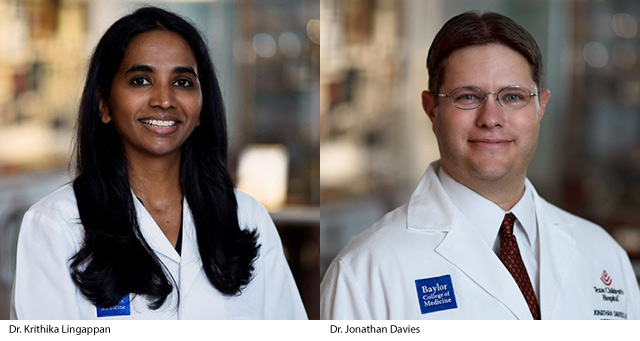
The rapid spread of COVID-19 has resulted in more than 4 million cases worldwide. The disease has a marked preference for adults with children being relatively spared. Understanding this preference might hold the key to the identification of therapeutic targets and is the topic of a paper Texas Children’s, Baylor College of Medicine, University of Texas Health Science Center and University of Texas McGovern Medical School physicians recently published in The American Journal of Physiology-Lung Cellular and Molecular Physiology.
The paper suggests differences in lung physiology and immune function as possible reasons why children are often spared from severe illness associated with SARS-CoV-2, the novel coronavirus that causes COVID-19.
The number of children under the age of 18 infected with SARS-CoV-2 has been found to be considerably lower than adults. Early reports from China and Italy have shown that children who become infected with the virus show symptoms less often than adults and even when they are symptomatic, are less likely to develop respiratory symptoms such as a cough or shortness of breath. In most cases, the infected under-18 population does not become as severely ill as their older counterparts. The newly identified multisystem inflammatory syndrome in children (MIS-C) associated with COVID-19, though serious, affects only about 1 percent of young people exposed to SARS-CoV-2.
“These profoundly decreased rates of symptomatic infection, hospitalization and death are well beyond statistical significance, require further examination and may hold the key to identifying therapeutic agents,” said the paper’s lead author, Texas Children’s Neonatologist Dr. Krithika Lingappan.
The way the SARS-CoV-2 virus enters the body and the state of the immune system itself are thought to be two primary differences in how children and adults become infected with the novel coronarvirus.
SARS-CoV-2 enters the body by binding to angiotensin converting enzyme-2 (ACE2), an enzyme that is attached to the outer surface of cells in the lungs, arteries, heart and other organs. This interaction is analogous to the virus unlocking the door to a cell. The higher the expression of ACE2 in the body, the more likely the virus will get in.
Studies have found that expression of ACE2 in the lungs increases with age. Infants and very young children have very low ACE2 expression, and older children still have lower expression than adults. Research suggests that children may be protected from the serious respiratory components of COVID-19 — including acute respiratory distress syndrome — due to their reduced ACE2 expression.
The immune system also plays a role in the novel coronavirus infection. Heightened immune response is often a factor in the inflammatory “cytokine storm” phase of COVID-19, in which the body attacks itself. Studies have found that CD4+ fighter cells in the immune system play an important role in limiting replication of the virus and that adults with moderate-to-severe COVID-19 had lower levels of CD4+ and CD8+ cells. Lung tissue in children naturally has a higher concentration of regulator T-cells, which may protect against severe COVID-19 by suppressing the immune response that, in adults, may lead to a cytokine storm.
“Selective, age-associated mortality render[s] COVID-19 a unique, infectious disease,” said Texas Children’s Neonatologist and Dr. Jonathan Davies, another author of the paper. “Insights into age-related variability in pathophysiological processes may offer critical observations, revealing focused paths of therapeutic investigation.”
Davies and Lingappan both said multidisciplinary collaboration between physicians and scientists, engaged in both pediatric and adult pursuits, holds significant promise and should be encouraged.
Click here to read the full article, “Understanding the age divide in COVID-19: Why are children overwhelmingly spared?”
Authors of the paper are:
Dr. Krithika Lingappan, Texas Children’s and Baylor College of Medicine
Dr. Harry Karimouty-Quintana, University of Texas Health Science Center
Dr. Jonathan Davies, Texas Children’s and Baylor College of Medicine
Dr. Bindu Akkanti, University of Texas Health Science Center
Dr. Matthew Harting, University of Texas Health Science Center

